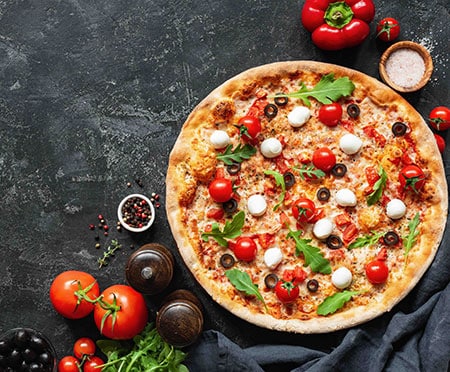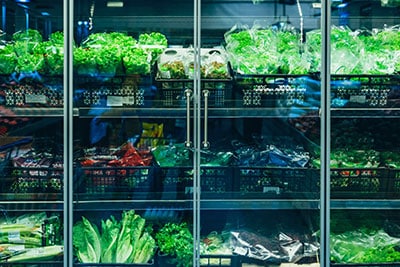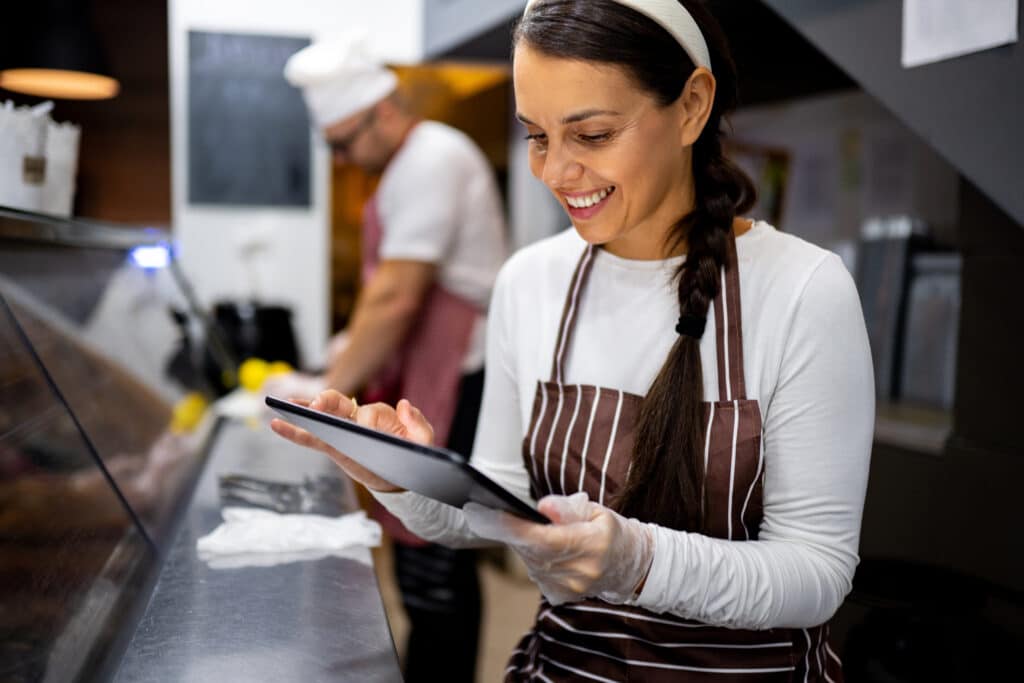While your restaurant’s profit and loss (P&L) statement can help you measure and ensure the success of your business, restaurant accounting doesn’t stop with your P&L. Your restaurant’s profitability also depends on effective inventory management and food cost control.
Truly understanding your food costs goes beyond a “food cost percentage” calculation. In order to maximize the efficiency of your inventory management, you can track the difference between your theoretical food costs and your actual food costs. The variance between the two indicates gaps in your plan versus your execution – and when you fill those gaps, you add money to your bottom line.
This variance can change daily, so frequent tracking of the gap can enable timely responses and maximum profit. Ultimately, understanding your actual vs. theoretical food cost variance can help you reduce food waste in your restaurants and reduce your food costs.
What’s the Difference Between Actual and Theoretical Food Cost?
 The theoretical food cost is what your restaurant food costs should be for a given period of time, according to the current cost of all ingredients. Theoretical food costs assume that for the meals sold, there were perfect portions, no waste, and no shrinkage of ingredients.
The theoretical food cost is what your restaurant food costs should be for a given period of time, according to the current cost of all ingredients. Theoretical food costs assume that for the meals sold, there were perfect portions, no waste, and no shrinkage of ingredients.
The actual food cost is the real cost of all the food that a restaurant actually spent for the same period of time. The actual food cost accounts for circumstances like imperfect portions, accidental waste, improper invoicing, or employee theft.
Once you can understand and track the theoretical and actual food costs, the important focal point is the difference between the two, called the actual vs. theoretical food cost variance. The variance is where you can implement efficiencies and optimize food costs – and where you can regain lost profits.
Understanding the Gap: Actual vs. Theoretical Food Cost Variance
The actual vs. theoretical food cost variance measures the efficiency of your food cost control. For example, if the actual food cost matches the theoretical, your restaurant is portioning things perfectly, and there is no waste or shrinkage in ingredients. However, if the variance between theoretical and actual is wide, there is waste somewhere along the way, indicating issues with imperfect portioning, execution, or employee training.
The goal, ultimately, is to reduce the variance as much as possible. Any extra variance represents money left on the table.
For example, if a restaurateur is aiming for a food cost of 31.0%, a restaurant that has an actual food cost of 33.3% may seem to be overspending. However, looking beyond the percentage of sales, if the theoretical food cost of the restaurant is 32.9%, the variance is only 0.4%. This indicates that ingredients are being efficiently used, and the restaurant is very close to the full amount of profit for each meal sold.
Say the same restaurateur sees another restaurant location with actual food costs of 31.5%, but the theoretical food costs are 29.0%. This restaurant may have a lower actual food cost percentage, but it has a higher variance of 2.5%. This represents a large amount of money being inefficiently wasted in food costs – and missing from the restaurant’s bottom line.
These two example restaurants show that just actual food cost, alone, doesn’t tell the whole story. The actual food cost may include employee inefficiencies, waste, spoilage, or improper portioning. And actual food cost can vary due to external local factors, even between different locations of the same restaurant operation. For example, say one restaurant location happens to sell many high-margin weeknight specials one week, or the price of a certain cheese in your locality increases. These circumstances can affect the actual food cost, which will in turn affect the food cost as a percentage of sales. These factors would be hidden in just looking at actual food cost, but they are visible in evaluating the food cost variance.
Knowing about your actual vs. theoretical food cost variance provides crucial information about the leaks in your profit margin. But by tracking variance, not just the total amount of money spent on ingredients, you can plug the gaps and redirect dollars to your bottom line.
Closing the Gap: Taking Steps to Reduce Food Costs
The best place to start addressing actual and theoretical food cost variance is to look at individual ingredients, and track which ingredient has the largest variance. This is where you can look to find waste or local price changes. By instituting proper usage, portioning, invoicing, and inventory tracking, you can find out where there is waste. Other fixes, like altering inventory practices, instituting compliance checks, or more frequent tracking may also lessen your food cost variance.
 Tracking these variances daily can give you insight into trends and useful information that can maximize your profit. Up-to-date reporting allows restaurateurs to spot when the price of products or ingredients increases, allowing you to immediately adjust menu prices or find a different source of product. Variance reporting can also flag improper usage before it becomes a daily occurrence. Finally, tracking daily helps you and your staff learn and stay on track by making changes you can implement virtually on the spot.
Tracking these variances daily can give you insight into trends and useful information that can maximize your profit. Up-to-date reporting allows restaurateurs to spot when the price of products or ingredients increases, allowing you to immediately adjust menu prices or find a different source of product. Variance reporting can also flag improper usage before it becomes a daily occurrence. Finally, tracking daily helps you and your staff learn and stay on track by making changes you can implement virtually on the spot.
Running a variance report only once a month, or bi-weekly, leads to food waste and missed profit that could be avoided with daily data. For example, if one restaurant location has an over-portioning problem, and the restaurant runs its variance report once a month, the store may waste ingredients for 30 days – and that is 30 days of permanently lost profit. Running the report daily allows immediate recognition and correction of the issue before it becomes a month-long leak.
What This Means for Your Restaurant Business
Using generic accounting software prevents restaurateurs from efficiently running reports on actual and theoretical food costs. This incomplete information can cause restaurant operators to lose money on wasted food costs and missed profit.
But with restaurant-specific tools available, operators can quickly and efficiently spot what is causing the variance between actual and theoretical food costs and make changes to immediately affect the outcome. With a tracking and reporting system in place, you can become a data-driven restaurateur, making sharp decisions about food costs based on tangible information.
If you would like to be able to track your actual vs. theoretical food costs, consider inventory management software that’s part of a comprehensive solution that incorporates restaurant accounting software and restaurant operations software into an all-in-one platform. With Restaurant365 you can save on food costs by making adjustments in the moment, based on up-to-date information. Restaurant365 is a cloud-based restaurant management solution that’s integrated with your Point-of-Sale system, as well as to your food and beverage vendors, payroll vendor and bank. For more information, schedule a free demo.
# # #
Joe Hannon is product owner, operations, at Restaurant365, where he works with the design and development teams to convert customer-generated ideas into usable product features and functionality. Prior to joining Restaurant365, he held management positions at several restaurants, including seven years as assistant general manager at Jason’s Deli, a fast-casual restaurant group with 268 locations in 29 states.



